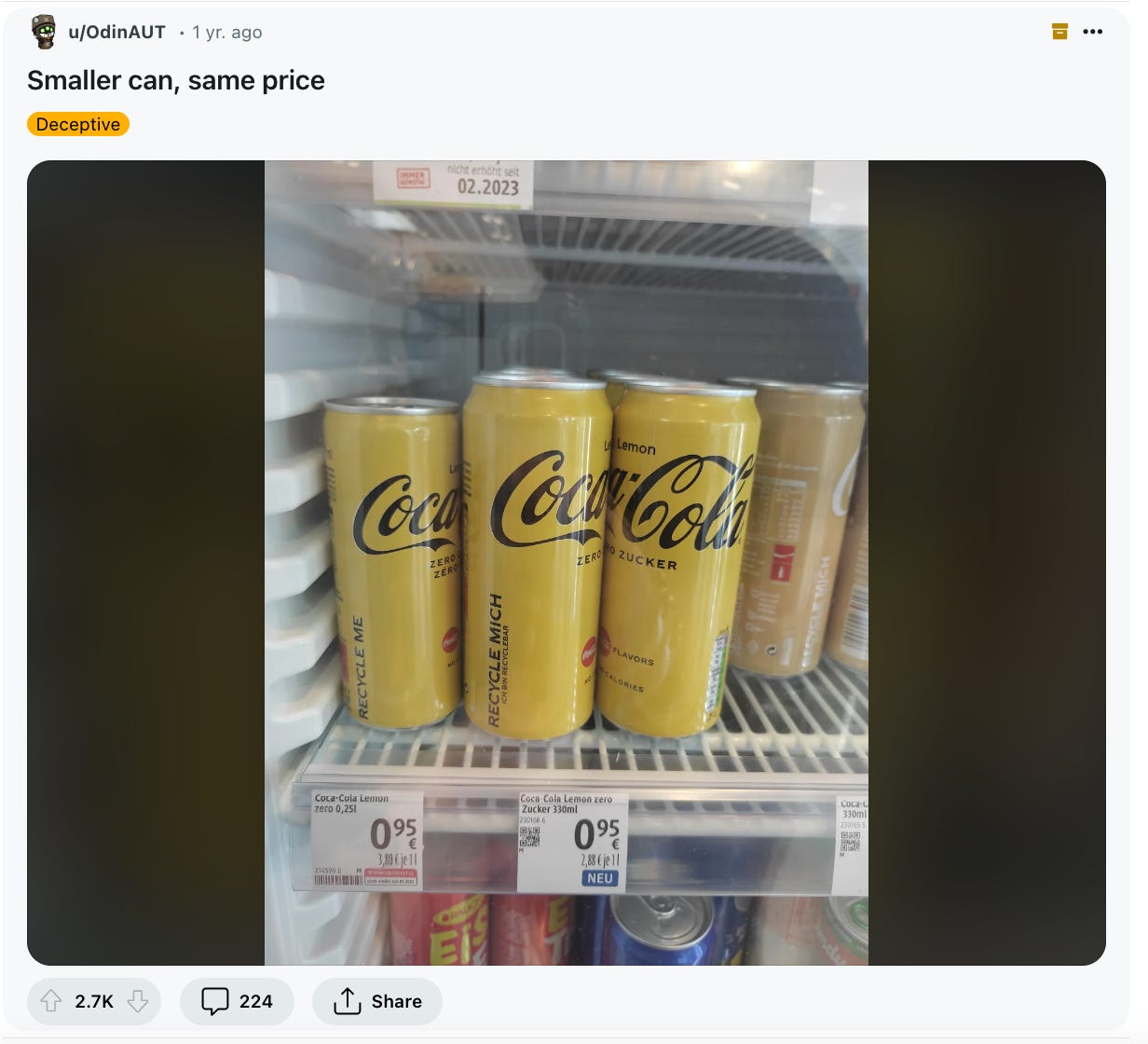R.O.L.L Call#20
The government vs. AI, Global Election Update, how Shrinkflation is affecting your purchasing power...
Reading
US sets stage for antitrust probes into Microsoft, OpenAI and Nvidia
The U.S. Justice Department and the Federal Trade Commission (FTC) have agreed to initiate potential antitrust investigations into Microsoft, OpenAI, and Nvidia concerning their dominant positions in the artificial intelligence (AI) industry. This agreement highlights increasing regulatory scrutiny over the concentration in AI-related industries. The investigations will address issues such as Big Tech's access to data for training AI models, the impact of generative AI on creative markets, and the possibility of companies circumventing merger reviews through partnerships.
Under the new arrangement, the Justice Department will focus on Nvidia's potential antitrust violations, while the FTC will investigate Microsoft and OpenAI. Nvidia, with approximately 80% market share in AI chips, and Microsoft, with a substantial investment in OpenAI, are key players in the AI sector. The scrutiny comes after the FTC ordered AI-related companies to provide information on their recent activities and partnerships.
This agreement mirrors a 2019 division of enforcement against Big Tech, which resulted in ongoing cases against companies like Meta, Amazon, Apple, and Google. The FTC is also examining Microsoft's $650 million deal with Inflection AI, suspecting it might bypass merger disclosure requirements. The new regulatory approach aims to ensure competitive practices in the rapidly growing AI industry.1
Global Elections Shake Up: Key Lessons and Implications for the U.S.
This past week, nearly 800 million people cast their votes in pivotal elections in India, Mexico, and South Africa. The outcomes are more significant than anticipated, revealing critical insights into global politics and America’s future international role. Here are the top five takeaways:
1. The Appeal of Movement Monopolies
Mexico joins the ranks of nations where rising political movements have disrupted longstanding orders. With Claudia Sheinbaum's historic win as Mexico’s first woman and Jewish president, Morena has solidified its dominance, drawing parallels to Turkey’s Erdoğan, Hungary’s Orbán, and India’s Modi. These leaders share charisma, strong party machines, and a tendency to weaken democratic institutions.
2. Monopolies Inevitably Stumble
Despite Morena’s triumph, the dominant parties in India and South Africa faced unexpected setbacks. India’s BJP and South Africa’s ANC lost their majorities, signaling a demand for political humility and coalition building. The ANC’s decline, marred by corruption and mismanagement, contrasts with Modi’s BJP, which still holds significant sway but faces growing voter dissatisfaction.
3. Personality Over Institutions
Key figures like AMLO in Mexico, Zuma in South Africa, and Modi in India dominate their political landscapes, even when not directly running. AMLO’s influence persists despite Sheinbaum's presidency, Zuma’s new party siphons support from the ANC, and Modi’s personality continues to shape India’s political direction.
4. Big Consequences for America
Mexico’s election is particularly crucial for the U.S., affecting migration and trade. Sheinbaum’s approach to these issues could significantly impact U.S. elections and bilateral relations. In South Africa, coalition government outcomes could shift its economic and foreign policies, influencing U.S. interests. India’s strategic alignment with the U.S. as a counterbalance to China remains vital, with Modi’s future policies being a key factor.
5. The Vibrancy of Democracy
These elections underscore the dynamic and participatory nature of democratic societies, in stark contrast to authoritarian regimes like Russia and China. The robust electoral engagement in these countries reflects a vibrant democratic process, despite existing challenges.
These developments highlight the complex and evolving landscape of global politics, underscoring the importance of democratic processes and their far-reaching impacts.2
Obsessing
Shrinkflation: The Hidden Cost of Your Morning Coffee
This morning, I stopped by my local coffee shop and noticed something unsettling about my usual order. I always get a Flat White, especially on cooler days, and it's been priced at £3.50 for as long as I can remember. But today, while the price remained the same, the cup felt noticeably smaller—around 10-15% smaller, to be precise. This got me thinking about a sneaky practice known as shrinkflation.3
What is Shrinkflation? Shrinkflation occurs when the price of a product stays the same, but the size or quantity decreases. It’s a subtle way for companies to pass on the costs of rising raw materials, supply chain issues, and higher labor wages without overtly raising prices.
A Common Culprit: The Cereal Industry Shrinkflation is rampant in many industries, but it's particularly noticeable in the cereal aisle. For example, Deakin University researchers discovered that since 2019, seven Kellogg’s cereal boxes have shrunk while 22 remained unchanged. Take Sultana Bran, for instance: it decreased from 850g to 700g, yet its price jumped from $6 to $9, an 82.1% unit price increase. Froot Loops also saw a reduction, from 500g to 460g, with the price rising from $8 to $10—a 35% increase.4
Why Shrinkflation Works Experts like Mark Stiving and Cammy Crolic explain that consumers are more likely to notice price hikes than size reductions. This makes shrinkflation a less painful way for companies to increase prices. Once products shrink, they rarely return to their original sizes, even when economic conditions improve. Instead, companies may introduce slightly larger versions at higher prices, often under new names like "Party Size" or "Mega Rolls."5
Consumer Impact Shrinkflation can erode brand loyalty, as noted by Phil Lempert. Consumers may switch to store brands or better-value products, though options are limited for essential items. Edgar Dworsky points out that while product sizes shrink, manufacturers might eventually re-release larger versions at higher prices, adding to consumer frustration.
Staying Vigilant Shrinkflation is a subtle but pervasive way the cost-of-living crisis affects us daily. As I delved deeper into this topic, I discovered a subreddit dedicated to shrinkflation where people share their own experiences. Here are a few interesting ones:
Soda: Cans are smaller but prices are unchanged
Chocolate Bars: Reduced in size but still sold at old prices.
Being aware of shrinkflation can help you make more informed purchasing decisions. Always check the quantity or size of your products, not just the price, to ensure you're getting the best value for your money.
Learning
Alcohol vs. Marijuana Consumption in the US
A recent analysis reveals a significant shift in marijuana and alcohol consumption patterns in the U.S. For the first time in about three decades, more Americans report daily or near-daily marijuana use compared to those who drink alcohol at similar levels.
The trend towards more frequent marijuana use spans various age groups, challenging stereotypes about cannabis being predominantly a young person's drug. Additionally, recent moves by the U.S. Department of Justice to ease restrictions on marijuana, including reclassifying it from a Schedule I to a Schedule III drug, signal a significant shift in federal cannabis policy, potentially leading to lighter criminal penalties and increased investments in the cannabis sector.



